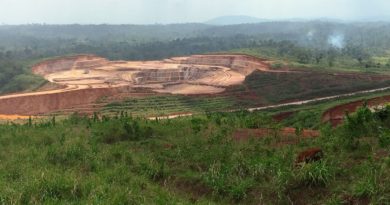Staying on top amid changing mining technology
According PwC, the mining industry we see today is at an existential crossroads. Funding is significantly complicated by the need to maintain a social licence to operate and by safety, health and environment requirements.
Simultaneously, the rate of technological change, the effect of Covid19 pandemic and changing consumer behaviour have emerged as major concerns for the industry.
Globally companies are exploring the emerging markets with opportunities in energy, utilities and mining. This shifts focus to Africa with it’s own challenges including resource nationalisation, a shortage of skilled labour, generally rising costs, weak infrastructure and pervasive corruption.
Punishing increases in input costs to the industry have led to an emphasis on unit cost cutting through the use of new technologies including process automation.
The industry is growing more dependent on a variety of matured and cutting-edge information technologies to manage risk, run more efficient operations, obtain incremental performance improvement over time, provide surety to tax authorities and shareholders, demonstrate to communities that they are delivering on commitments, improving the quality and retention of learning, eliminate fatalities and connect with suppliers and employees.
The challenge is to stay competitive, and to succeed. Digitisation is a fundamental part of the new business model, encompassing and affecting all areas of business: supply chains and operations, marketing and sales, and interactions with current and potential customers.
Shifting consumer behaviour presents an even larger risk to the future of mining. Customers associate the product with their societal and environmental impact and have the platforms to gain publicity through social media.
With a history of insufficient reclamation and environmental remediation, miners are at risk of the ability to function, including the potential to deny mining industries – such as coal – access to funding.
This transformation in the mindset of consumers and their access to public platforms has changed the debate and brought the concept of ‘social licence to operate’ to the fore. The onus is now on mining companies to use technology to reach out and demonstrate that they have fulfilled their obligations in terms of their feeder communities.
With a long and growing list of industries and products that have been disrupted by new technologies, it is clear that all these issues require the right leadership to succeed. Changing and adapting to the realities of an interconnected world is the challenge.
For change to take place, it must be driven from the top. If change is driven from the top without a strong technology visionary – a visionary that can combine technologies in new and exciting ways to fulfil objectives – then IT will keep doing what it always has and will potentially be relegated to the back office permanently.
The chief technology officer is not always at the top table and does not always have sight of the strategy and the business value drivers, but it is evident that unless they do – the organisation is at risk.
The new chief technology officer, as a technology leader, has a different set of skills. They are integrators of people and ideas, people that strive for measurable improvements now and more in the future. They are leaders that have the ability to manage without ego – because the role is to enable the success of others. They are leaders with conscience – allowing them to thrive in an era of transparency.




